Egypt
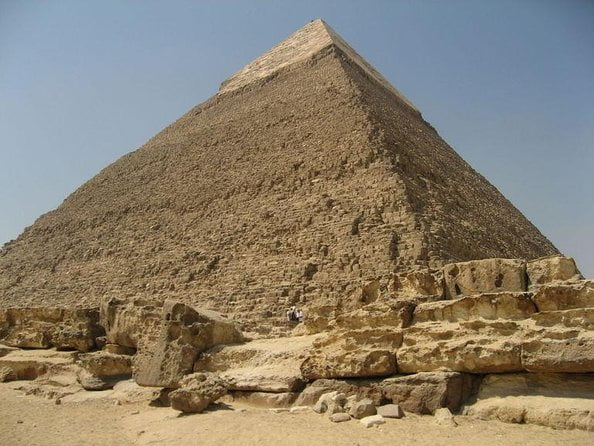
Giza Pyramids
One of the most mysterious Seven Wonders of the Ancient World (and the only one still standing), the Pyramids of Giza—the Great Pyramid of Khufu, Pyramid of Khafre, and Pyramid of Menkaure—still live up to more than 4,000 years of hype. Seeing these 4th-dynasty pyramids and their guardian Great Sphinx rising from the Giza Plateau is a must on any trip to Cairo (and the reason many travelers find themselves in Egypt).
Book
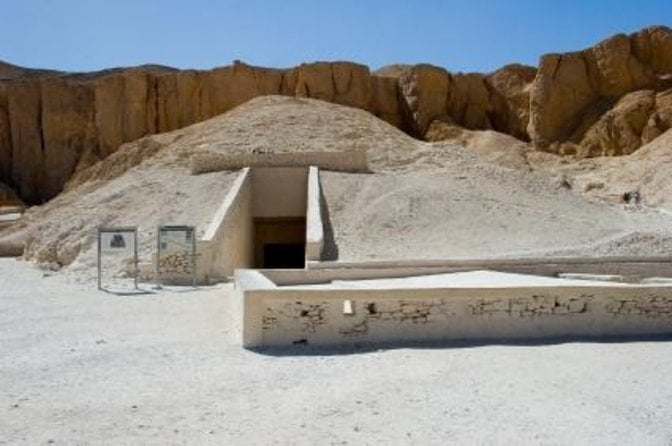
Tomb of Tutankhamun
Vivid wall paintings keep watch over the Tomb of Tutankhamun, where King Tutankhamun’s linen-wrapped mummy is preserved in a glass case. While most of Tut’s treasures are on display at the National Museum in Cairo, visit the tomb to see where the young king’s body lay for thousands of years.
Book
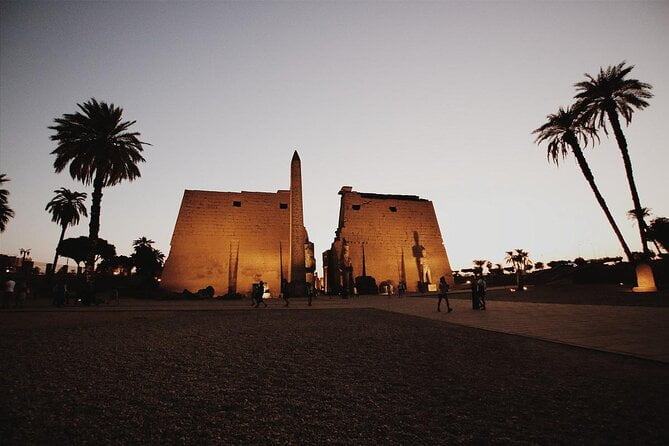
Luxor Temple
The enormous Luxor Temple was one of the great constructions of the New Kingdom (dating from the 14th century BC) dedicated to the god Amun. It was known as the “Southern Sanctuary” and was the site of ceremonies aimed at encouraging the life-giving Nile floods.Once through the processional Avenue of Sphinxes you come to the First Pylon, which announces the phenomenal scale of the stonework here: statues, columns and obelisks all compete with each other in a race to the sky.Ensuing civilizations have also left their marks: there’s a shrine erected by Alexander the Great, Roman wall frescoes as well as a 14th century AD mosque, ensuring this remains a place of worship in the present day.
Book
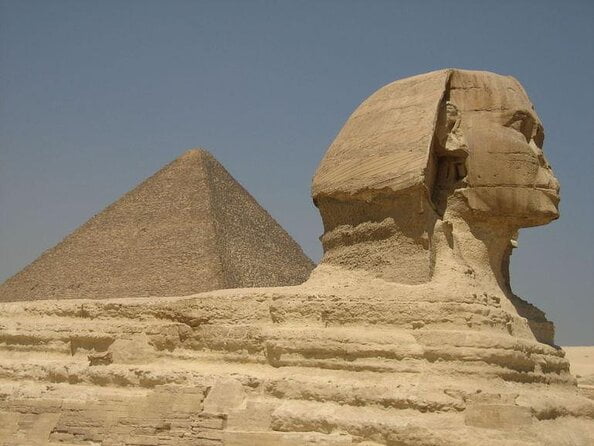
Sphinx
The 66-foot-tall (20-meter-tall) Sphinx of Giza is an icon of ancient Egypt, and the subject of continued debate regarding its meaning, age, and original builder. With the head of a human and the body of a lion, the Sphinx—one of the world’s largest and oldest statues—is said to symbolize strength, power, and wisdom.
Book
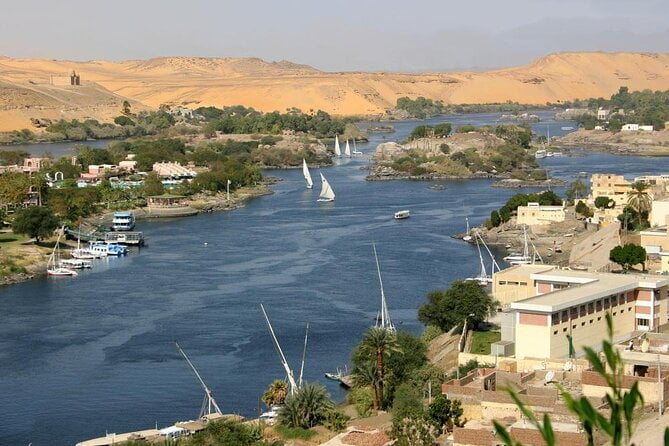
Nile River
Measuring a mighty 4,150 miles (6,680 kilometers) from end to end, the Nile is the world’s longest river. It’s also the lifeblood of Egypt, flowing through the heart of the Sahara desert, and passing through cities, including Khartoum, Aswan, Luxor, and Cairo, before emptying into the Mediterranean Sea at Alexandria.
Book
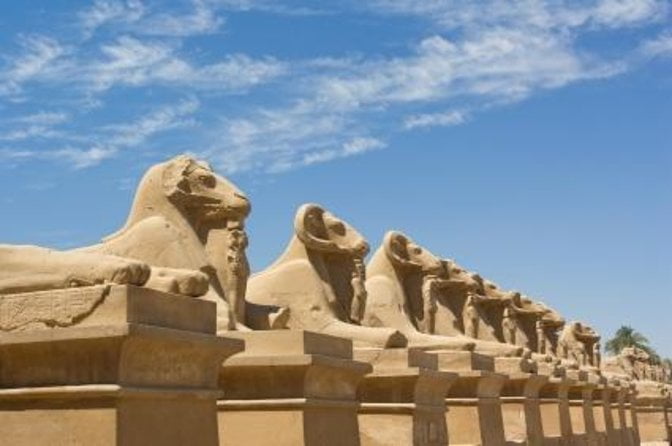
Karnak Temple
Ancient architecture goes monumental at this landmark in Luxor, which houses magnificent statues, columns, and the largest place of worship ever constructed—just a stone’s throw from downtown traffic. Construction of Karnak Temple spanned more than 1,000 years, and it shows in the diverse art and architecture of this Egyptian site.
Book
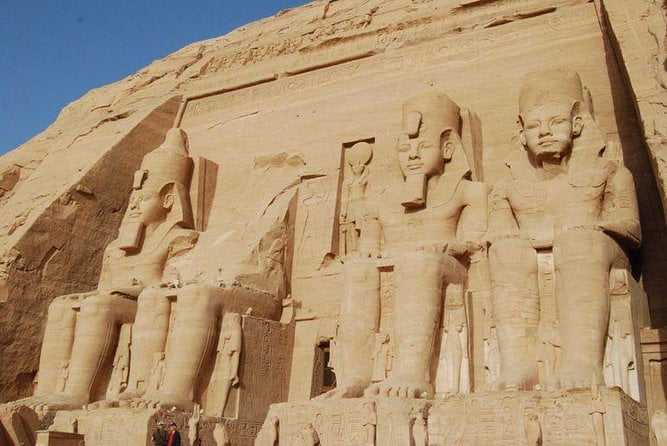
Abu Simbel Temples
Built as royal tombs, the Great Temple of Ramses II and the Temple of Hathor are some of Egypt’s best known archeological sites. Step past the enormous sandstone statues carved into the temple facades, and explore the interiors, which are decorated with art and hieroglyphics.
Book
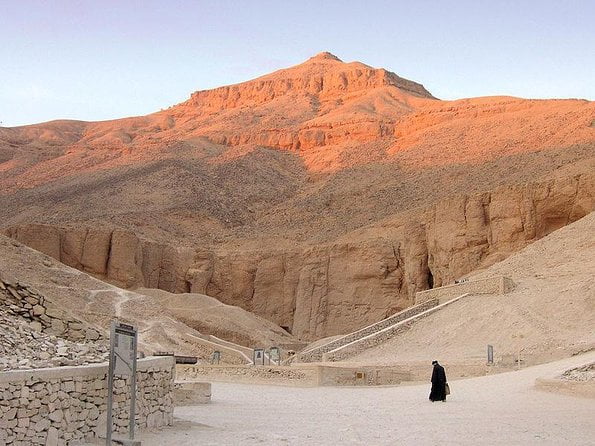
Valley of the Kings
Valley of the Kings is a treasure trove of archaeological wonders, containing dozens of tombs filled with art and hieroglyphics. See King Tutankhamun’s tomb—the most famous sight in the valley—then tour the temples of the sons of Ramses II and of Amenhotep III and others to marvel at the centuries’ old art and artifacts.
Book

Mt. Sinai
Mt. Sinai rises a lofty 7,497 feet (2,285 meters) above sea level and is an important religious pilgrimage site, where the prophet Moses is said to have received the 10 Commandments directly from God. Visit the site’s ancient monastery or hike to the summit for panoramic views of Egypt’s mountainous Sinai Peninsula.
Book
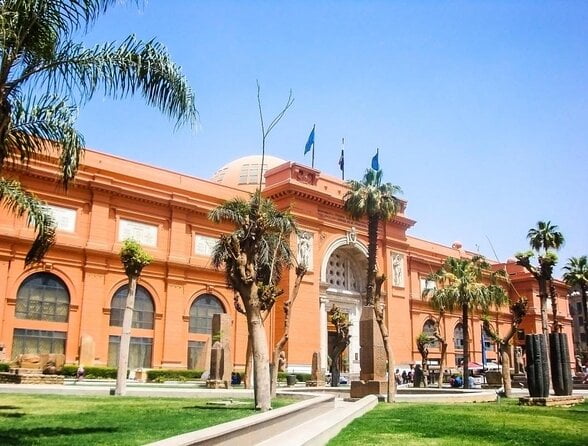
Egyptian Museum
A centerpiece of Tahrir Square, the Egyptian Museum (Museum of Egyptian Antiquities) has been a mecca for Egyptologists since it opened and houses some of the world’s greatest ancient relics. While some collections are moving to the new Grand Egyptian Museum, it remains a must-see for anyone interested in ancient Egypt.
Book
Lebanon
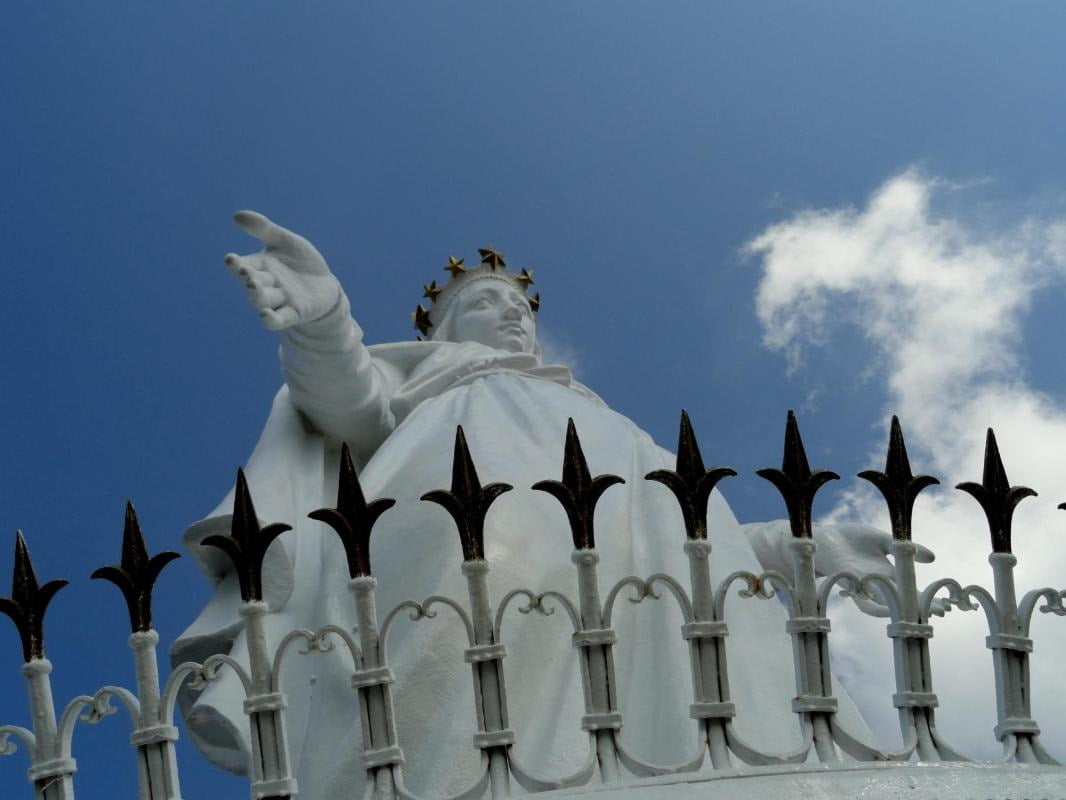
Our Lady of Lebanon (Notre Dame du Liban)
On a 1,970-foot (600-meter) hilltop just north of Beirut overlooking the Bay of Jounieh stands a painted bronze statue of the Virgin Mary with her hands outstretched toward the city. The shrine to Our Lady of Lebanon (Notre Dame du Liban), the nation’s patron saint, was erected in 1908 and has become one of the world’s most important shrines to the Virgin Mary and attracts millions of pilgrims and visitors each year. It's also occasionally known as Our Lady of Harissa.
Getting to the base of the white statue requires 10-minute ride up the hillside from Jounieh aboard ateleferique, or cable car. The views of Beirut and the sea beyond from Harissa’s base are worth the ride in their own right.
Book
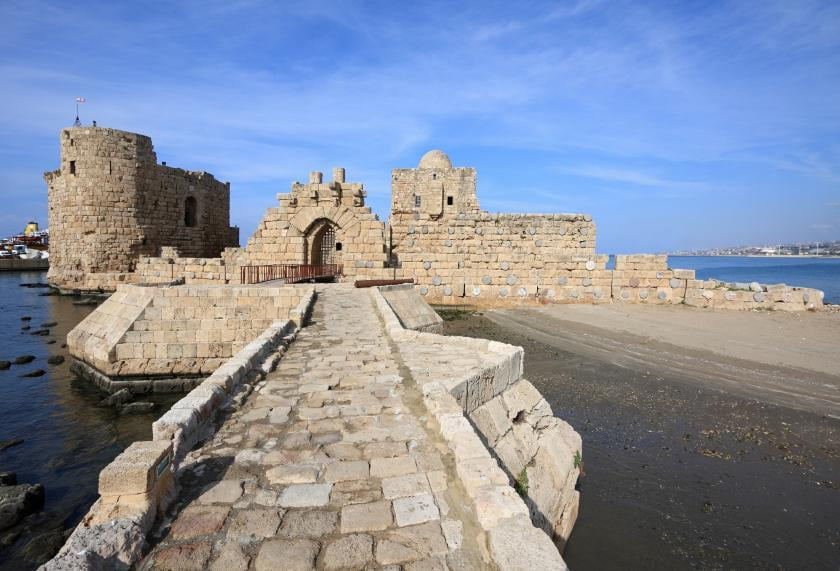
Sidon (Saida)
Mentioned in the book of Genesis, the ancient port city of Sidon is known to Lebanese as Saida. Its scenic old town boasts attractive souks, historic mosques, a Crusader sea castle, a 17th-century khan (trading inn), and a fascinating soap museum. Close to town lies the Temple of Eshmun, Lebanon’s best-preserved Phoenician ruin.
Book
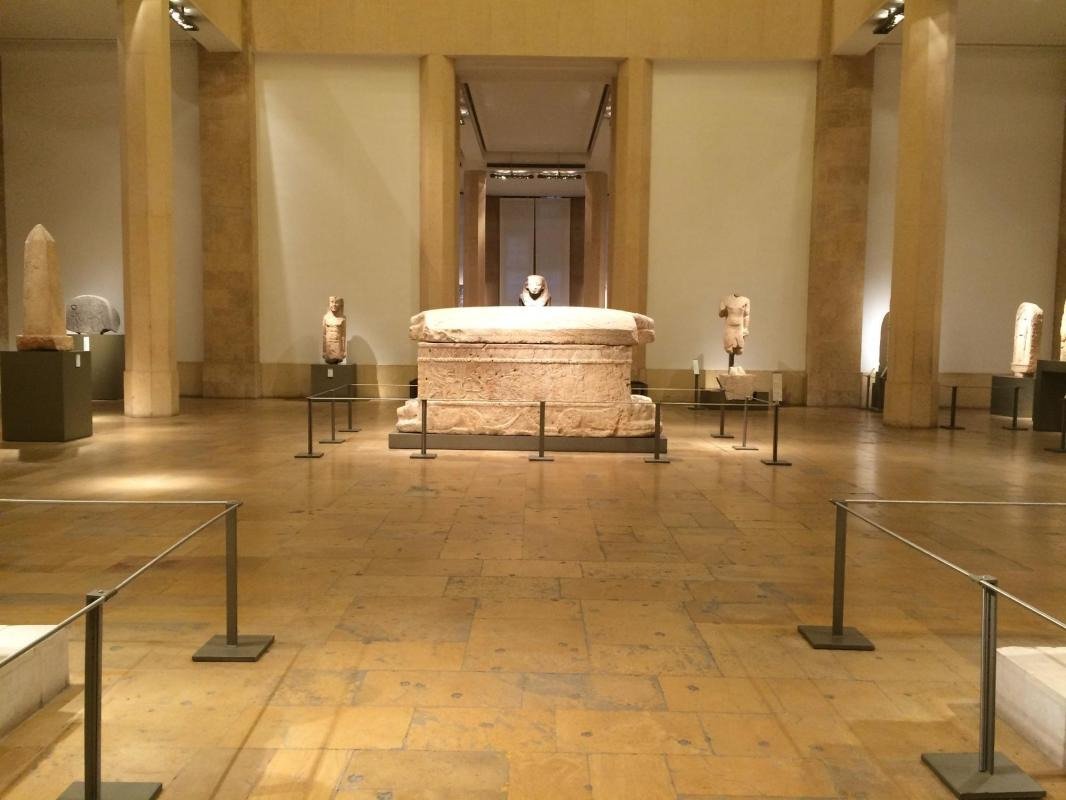
Beirut National Museum (Musée National de Beyrouth)
An essential stop for all visitors to the city, Beirut National Museum (Musée National de Beyrouth) features an impressive, well-displayed collection of archaeological artifacts from throughout the ages, offering a thorough overview of Lebanon’s history. Entry into the National Museum of Beirut is a staple of most historical Beirut walking tours.
The museum collection is displayed in chronological order, beginning in prehistory and ending in the Ottoman era. The circuit begins on the ground floor, where you’ll find various ancient statues and mosaics. The museum’s upper level features more than 1,000 artifacts from the Bronze and Iron ages, as well as from the Hellenistic, Roman, Byzantine and Mamluk eras, all arranged by theme. Of its many artifacts, the Phoenician gilded bronze figurines found buried near the Obelisk Temple are probably the museum’s most famous.
Book
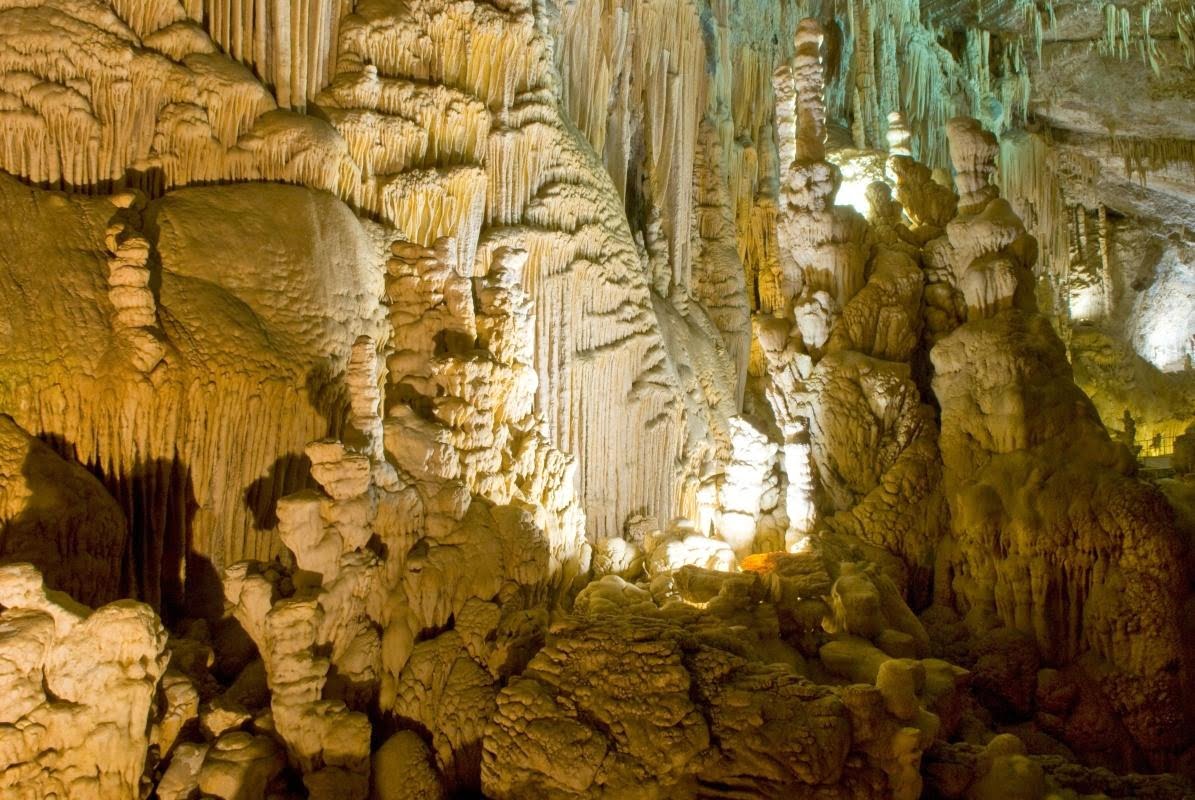
Jeita Grotto
Lebanon’s spectacular Jeita Grotto makes an exciting day trip from Beirut. Once considered as a finalist for the Seven Natural Wonders of the World, this dramatic cave is divided into two levels: a lower grotto and an upper grotto, which contains the White Chamber, home to the world’s largest stalactite.
Book
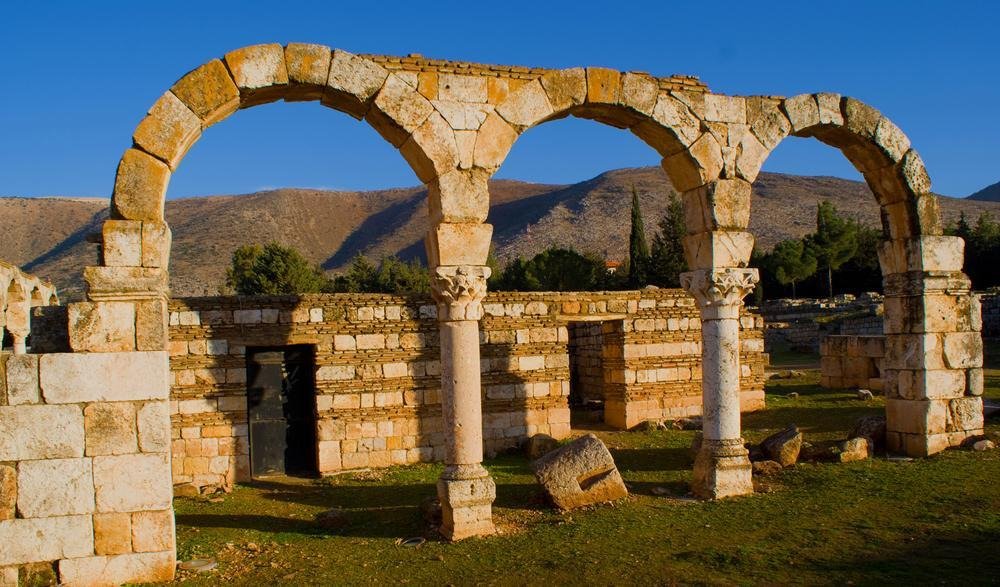
Anjar
Founded in the early eighth century, at the start of the Islamic period, the UNESCO World Heritage Site of Anjar is a fascinating example of an Umayyad fortified city. Set in Lebanon’s Bekaa Valley astride an important trading route, Anjar highlights include the remains of palaces, a mosque, and Roman-style public baths.
Book
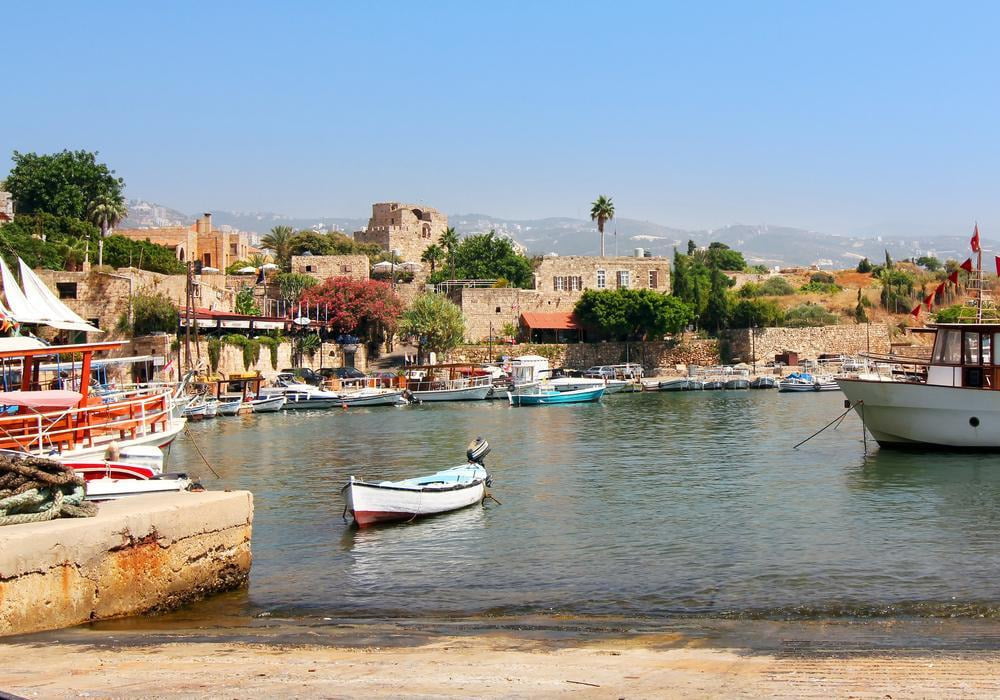
Byblos (Jbeil)
A UNESCO World Heritage Site, Byblos (Jbeil) has been home to a wealth of civilizations over the last 8,000 years. A historic harbor, a Crusader castle, an atmospheric medieval center, and a fascinating archaeological site add heritage charm. During summer, there’s a vibrant party scene as well as outstanding seafood eateries.
Book
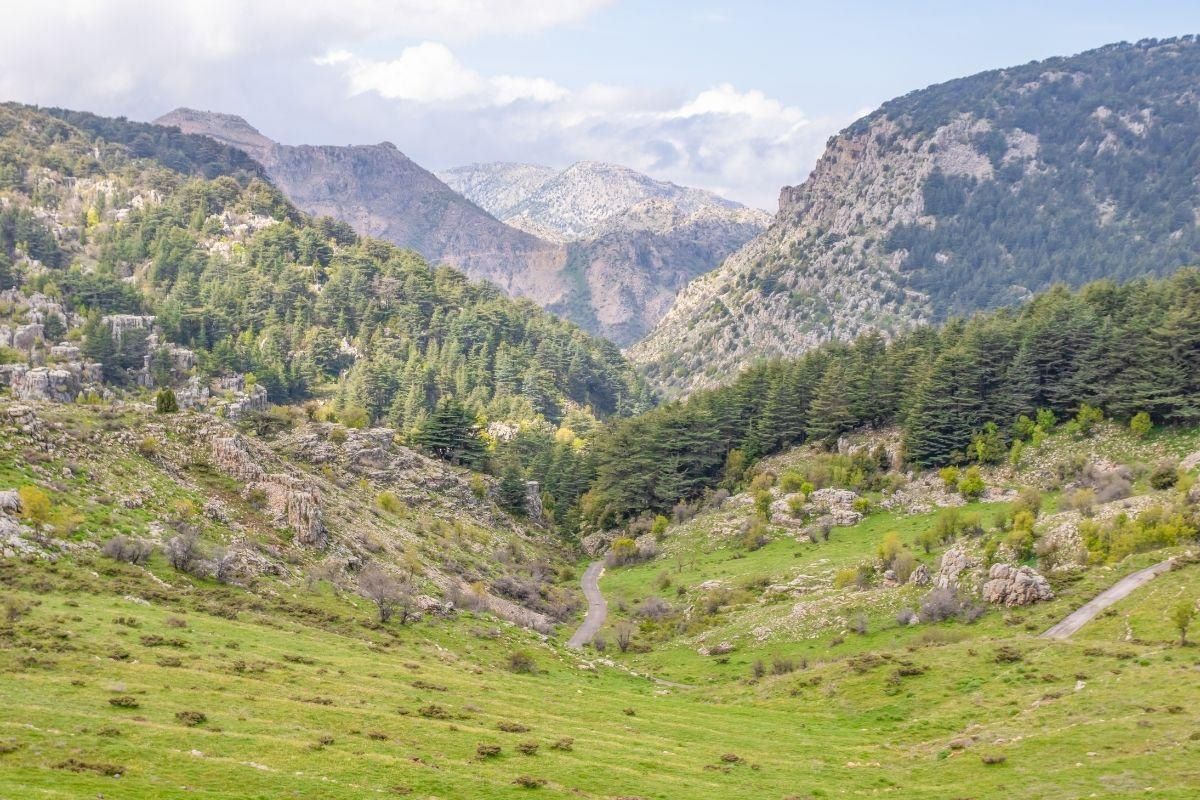
Forest of the Cedars of God (Horsh Arz el-Rab)
Prized in biblical times, the cedars of Lebanon are the remnants of an ancient forest. The Forest of the Cedars of God (Horsh Arz el-Rab), a cluster close to northern Lebanon’s Qadisha Valley, is recognized with UNESCO World Heritage status. These majestic trees, a distinct species known as cedrus Libani, can live more than 1,000 years and grow to 130 feet (40 meters) tall.
Book
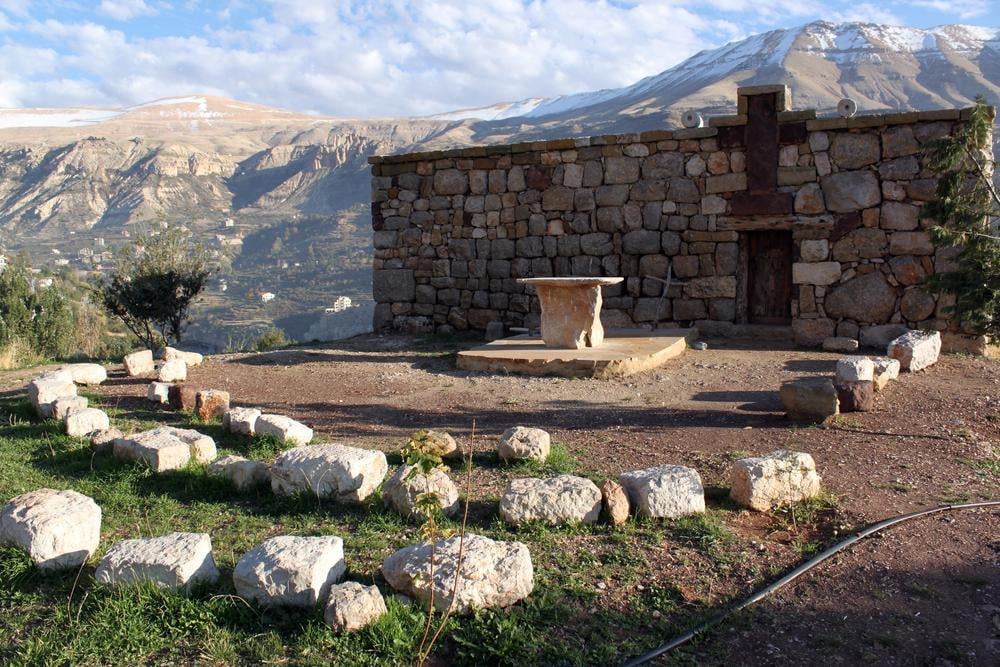
Qadisha Valley (Wadi Kadisha)
The rugged slopes of the Qadisha Valley, a UNESCO World Heritage Site, are home to mountain wilderness, ancient monasteries, the pretty village of Bcharré, and even the occasional hermit. Carved by the sacred river Qadisha and mentioned in the Bible, it’s also known as the Kadisha Valley, Wadi Kadisha, Ouadi Qadisha, and Kadisha Gorge.
Book
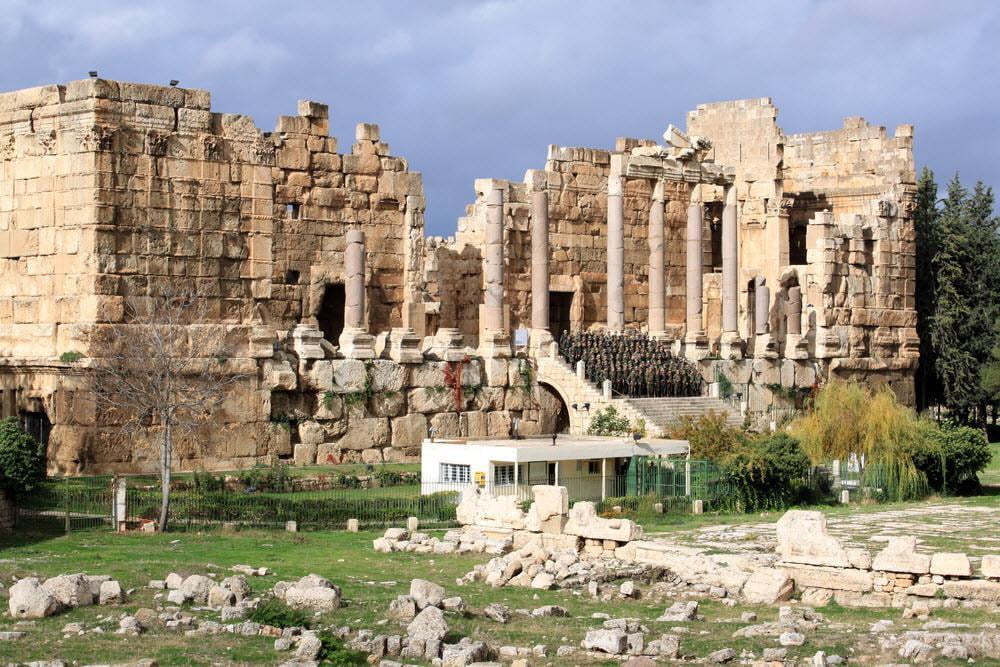
Baalbek
A UNESCO World Heritage Site, Lebanon’s Baalbek ruins are some of the best-preserved Greco-Roman structures in all the Middle East. The site was once a thriving Phoenician city known as Heliopolis (“Sun City”), and today, the Temple of Bacchus, Temple of Venus, and Temple of Jupiter offer visions of past glories.
Book
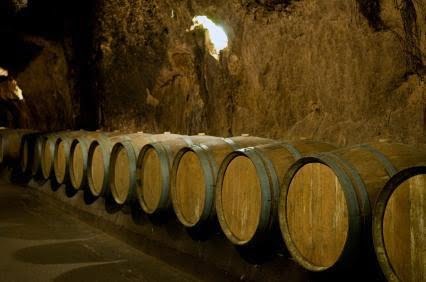
Chateau Ksara
Founded in 1857, Château Ksara is one of Lebanon’s oldest wineries and an ever-popular stop on Bekaa Valley tours. Situated at around 3,280 feet (1,000 meters) above sea level, the estate has vineyards across Lebanon. Star of the show at the winery, besides the wines themselves, are the historic 1.5-mile (2-kilometer) cave cellars.
Book
Maldives
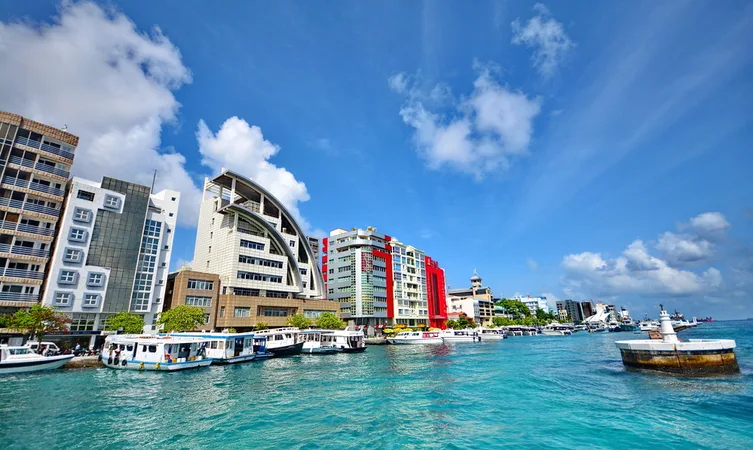
Male City
Male City is the capital of the Maldives and sits at the southern rim of North Malé Atoll. Male Maldives is untouched by the human feet and is the most preferred gateway for honeymoon seekers, couples, and water sports lovers. It is a natural paradise with lush island canopy and pictures of perfect sceneries that are an absolute treat for the eyes as well as the senses. You can escape from the hustle and bustle of the world in this natural hideaway that has palm-fringed lagoons and the most calming environment.
Book
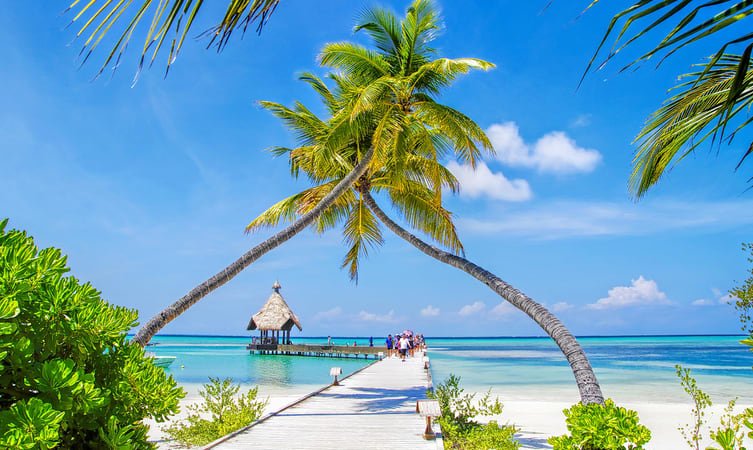
Addu Atoll
Better known as Seenu Atoll, Addu Atoll happens to be Maldives’ southernmost atoll. This popular atoll comprises a myriad of well-known and beautiful islands including the Gan Island. Other places of tourist interest on Addu Atoll include Meedhoo Island, Hulhudhoo Island, Hithadhoo Island, Maradhoo Island, and Feydhoo Island. Each of these islands is covered densely with clean local villages and lined with tall and shady coconut trees.
Book
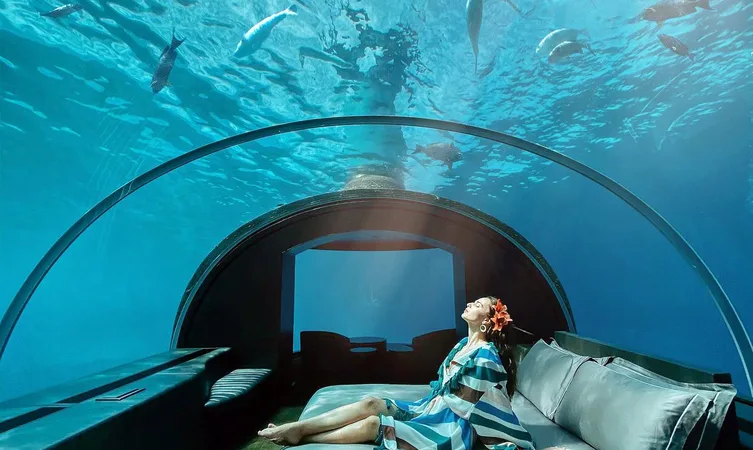
The Muraka - Conrad
Housed in the Conrad Maldives resort, The Muraka is a lavish 2-level undersea villa. Letting you experience an exotic style of living, dining, and sleeping under the azure blue waters of the Indian Ocean, this surreal residence is not only the most opulent accommodation option, but also one of the most bewildering Maldives sightseeing places.
During your stay here, you can enjoy world-class facilities such as private chef and butler, infinity pool, professional spa treatments, on-call fitness trainer, and water activities. Some of the water sports that the adrenaline seekers can expect to enjoy at The Muraka include snorkeling, and diving, jet skiing.
Book
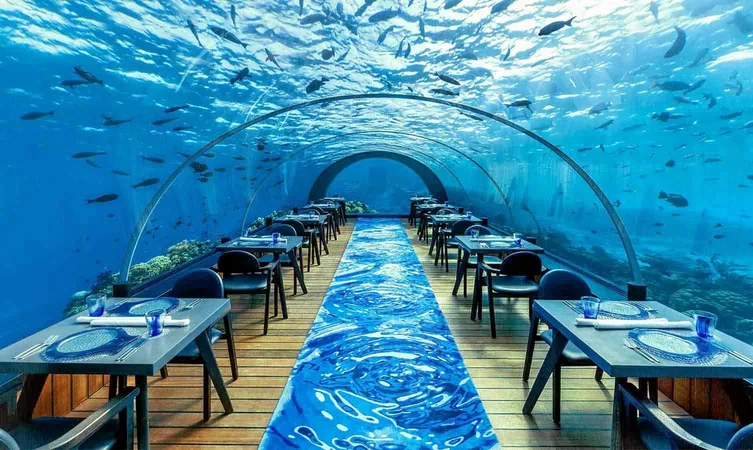
5.8 Undersea Restaurant
Showcasing a gorgeous interior, 5.8 Undersea Restaurant is an unparalleled treat to the eyes. With an extensive menu and delectable culinary preparations, this exquisite underwater Maldivian restaurant lets you enjoy wholesome lunch, romantic sunset dinner, and scrumptious and surreal moonlit dinner.
Making for the largest all-glass underwater restaurant in the world, 5.8 Undersea Restaurant serves its guests excellent service, an opulent ambiance, and super yummilicious European, fusion, and seafood delicacies. Offering multiple dining settings, this restaurant forms an ideal culinary option for couples as well as families.
Book
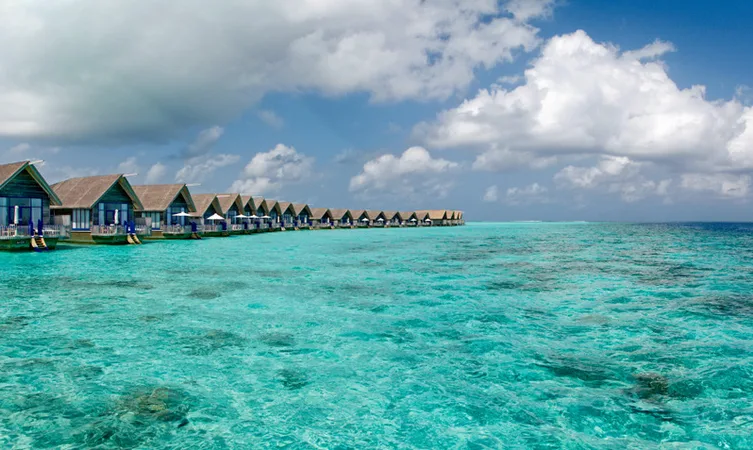
COMO Cocoa Island
Known for its luxurious villas offering 5-star hospitality, this place is a must-visit for experiencing pampering at its best. The clear blue water and soft white sandy shores are something that would just touch your soul and lure you during your visit to this exquisite island. The major attractions of COMO Cocoa Island includes scuba diving, snorkeling, relaxing spa retreats.
Book
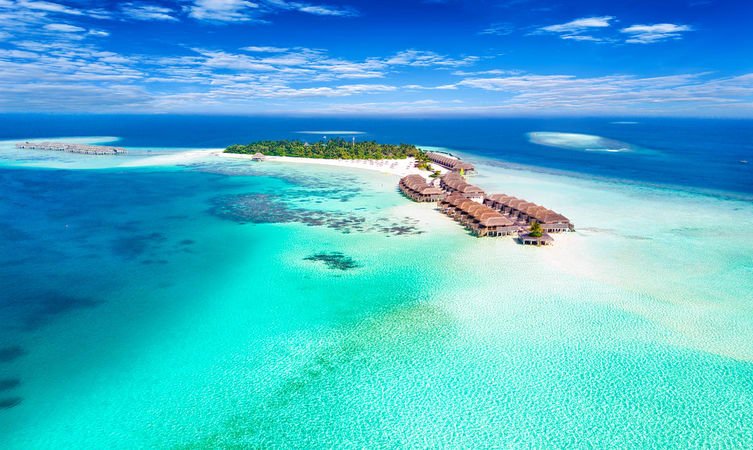
Sun Island
Known popularly as Nalaguraidhoo Island, the Sun Island happens to be one of the top places to see in Maldives. Adorned with lavish greenery, fragrant tropical flowers, and stunning beaches, this place propels a myriad of visitors wanting to relax in the arms of nature.
The island assures the maximum joy and pleasure to the vacationers with its fabulous resorts, sparkling blue waters, and flamboyant shores. Owing to its incredible virgin beauty and true serenity, this place is counted among the best destinations for honeymooning.
The major attractions in Sun Island include snorkeling, windsurfing, diving, and relaxing at the world-class spa retreats.
Book
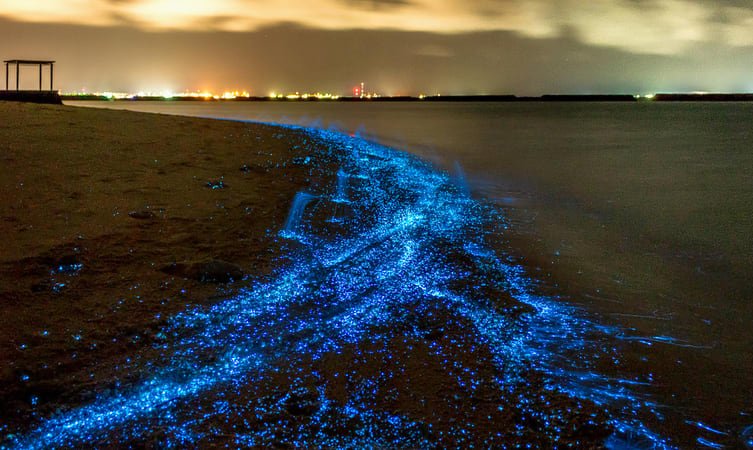
Maldives Glowing Beach
The Maldives Glowing Beach is situated at the Mudhdhoo Island, also known as the Vaadhoo Island in Raa Atoll. Beach is one of the most visited tourist destinations in these islands, mostly known for its phenomenal fluorescent, glowing waves. This natural phenomenon occurs due to the presence of millions of marine microbes known as phytoplankton in the water.
Book
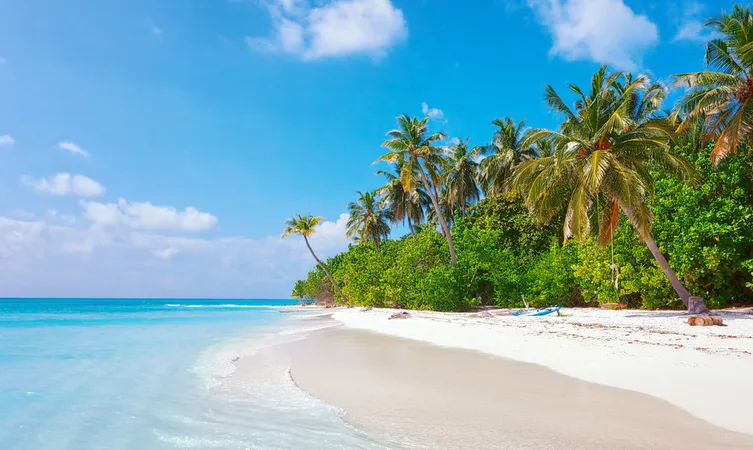
Fulhadhoo Island
Packed with clear lagoons, shady palm trees, white sand beaches, and a serene ambiance, Fulhadhoo happens to be one of the most tranquilizing islands in Maldives. Counted among the least explored and most isolated islands of the country, this place holds a plethora of hidden treasures.
- Some of the exciting things tourists love to do at Fulhadhoo Island include diving, snorkeling, and turtle and dolphin spotting. Vacationers also spend time swimming in the blue lagoons and relaxing at the lavish beach resorts during their visit to this exquisite island. One can also take a brief walk through the eastern village and experience the rich culture of this surreal Maldivian island.
Book
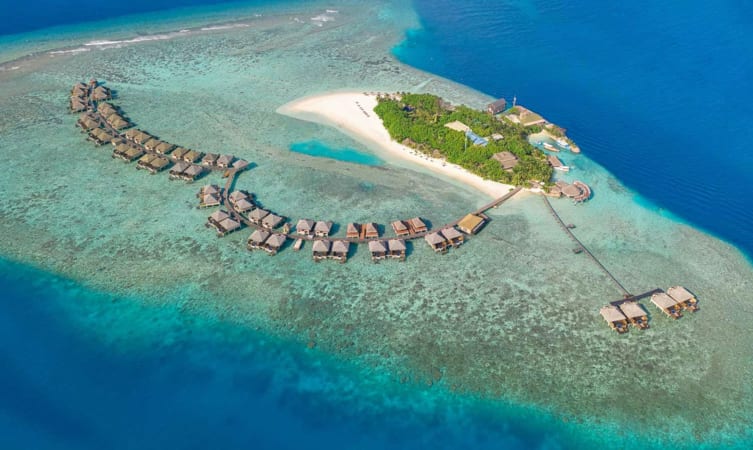
Vaadhoo Island
Vaadhoo Island is a beautiful island in the Maldives which offers beautiful beaches, iconic landscapes and mesmerising beauty. When the sun goes down at Vaadhoo Island, the sea waves lapping the shore light up like a shimmering field of blue dots giving the sea the appearance of the starlit night sky.
Book
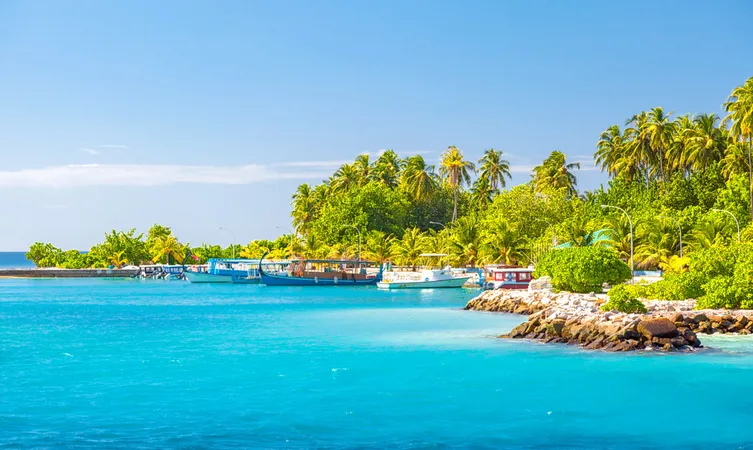
Dhigurah
Located at a distance of around 96 kilometers from the capital city Male, Dhigurah is counted among the least resided islands in Maldives. Packed with lavish resorts and white sand beaches, this beautiful island offers the best blend of entertainment and comfort.
Known for shark safari and snorkeling activities, this destination promises the finest diving experience in the entire world. The different types of snorkeling opportunities available at Dhigurah Island include Whale Shark Snorkeling, Manta Snorkeling, and House Reef Snorkeling.
Other activities enjoyed by visitors on this island include dolphin spotting, fishing, and sandbank picnicking. Tourists also get a chance to enjoy fish barbeque in the evening, which is arranged on the sandbank of Dhigurah.
Book
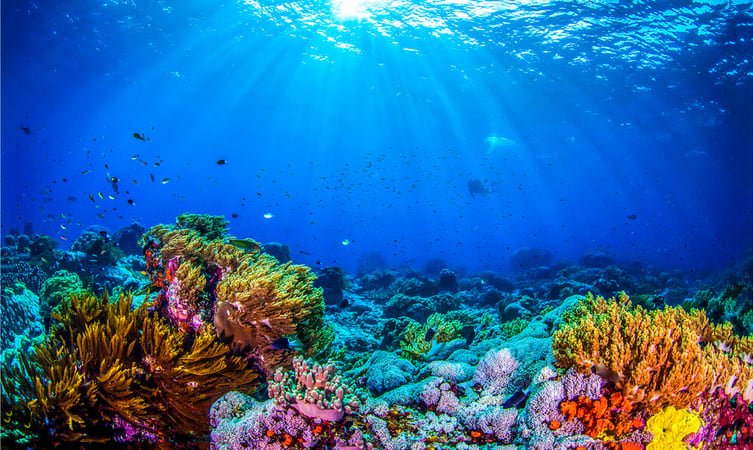
Banana Reef
Ornated with powerful overhangs, colorful coral reefs, majestic cliffs, and beautiful caves, Banana Reef is counted among the most ancient reefs in Maldives. Populated by groupers, barracudas, and sharks, this place propels divers from across the globe. The calm currents and excellent visibility work perfectly for beginners as well as seasoned divers.
The dive range at Banana Reef starts from five meters and goes till thirty meters underwater. The temperature of the water also remains quite accommodating, ranging from 24oC to 29oC. All these conditions make Banana Reef a perfect hub for adventure enthusiasts to experience scuba diving, snorkeling, and jet skiing.
Book
Turkey

Maiden’s Tower (Kiz Kulesi)
Located on an islet in the Bosphorus Strait, just offshore from Istanbul’s Uskudar neighborhood, Maiden’s Tower (Kiz Kulesi) is a historical site that has inspired myths and legends. The Ottomans expanded and rebuilt the structure, and today it contains a restaurant and bar with views of the city.
Book

Blue Mosque (Sultanahmet Camii)
Explore the grandeur of Ottoman architecture at the Blue Mosque (Sultanahmet Camii), located on Istanbul’s Old City peninsula. Opened in 1616 to rival the Byzantine-era Hagia Sophia (Aya Sofya) across the way, the six minarets punctuating the Istanbul skyline and 20,000 blue Iznik tiles decorating its interior are designed to inspire awe.
Book

Istanbul City Walls
Marking the boundaries of Istanbul’s historical center, the Istanbul City Walls (Walls of Constantinople) still stand on the Old City peninsula. Built in the fourth and fifth centuries, the defensive walls were breached in 1453 when the Ottomans conquered Constantinople. Today many sections have been restored and cut through bustling historical neighborhoods.
Book

Fatih Sultan Mehmet Bridge
Surprisingly for a city split between two continents, Istanbul existed without connecting bridges for most of its existence. After the construction of the Bosphorus Bridge in the 1970s, the second unifying bridge, Fatih Sultan Mehmet, came in 1988. It is part of Istanbul’s O-2 highway and connects the European and Asian sides of the city.
Book

Galata Tower (Galata Kulesi)
Rising high above its namesake neighborhood, Istanbul’s Galata Tower (Galata Kulesi) dates back to the Genoese presence in Constantinople in the 14th century. An elevator takes you up to a viewing platform located under the roof, which offers panoramic views of the Old City peninsula and Beyoglu neighborhood.
Book

Spice Bazaar (Misir Carsisi)
Built in the 17th century, the covered Spice Bazaar is Istanbul’s fragrant hub for all things flavorful. Piles of pepper, saffron, teas, and dried apricots nestle alongside shops selling colorful Turkish delight, silk scarves, and glass mosaic lamps. Take time to chat with vendors, sip tea, and haggle for the perfect price.
Book

Troy (Truva)
Troy is one of the world’s most famous ancient cities, renowned for being the site of the Trojan War, as described by Homer inThe Iliad. Today’s Troy—a UNESCO World Heritage-listed area of ruins and archaeological excavations—contains the remains of multiple settlements, some dating back 5,000 years.
Book

Küçüksu Palace (Küçüksu Kasri)
Commissioned in the mid-19th century by Sultan Abdulmecit, Küçüksu Palace (Küçüksu Kasri) Palace, aka Küçüksu Pavilion (Küçüksu Sarayı), was designed to be a summer palace for Ottoman sultans. The Istanbul palace’s design blends European and Ottoman styles, with an intricate carved exterior, sweeping staircases, and an interior with gilded accents and chandeliers.
Book

Taksim Square (Taksim Meydani)
Taksim Square (Taksim Meydani), Istanbul’s main modern hub, is located at the end of the pedestrian thoroughfare Istiklal Avenue (Istiklal Caddesi). A popular meeting place, Taksim Square is anchored by the Monument of the Republic and buzzes with activity day and night. The area historically hosts public celebrations, parades, and demonstrations.
Book

Hagia Sophia (Ayasofya)
Built in 532 as the world’s largest place of worship, the Hagia Sophia (Ayasofya) shifts its identity with the times but never loses its grandeur. Converted from a church to a mosque during the Ottoman era and becoming a museum in 1935, the pink-hued Old City building is one of Istanbul’s don’t-miss attractions.
Book

Dolmabahce Palace
Built in an opulent European style, Dolmabahce Palace (Dolmabahce Sarayi) was the home of the Ottoman sultans in the late 19th and early 20th centuries, before the fall of the empire. The giant crystal chandeliers, marble staircases, and lush carpets that adorn the interior reflect the shift toward Istanbul’s more European way of thinking.
Book
United Arab Emirates
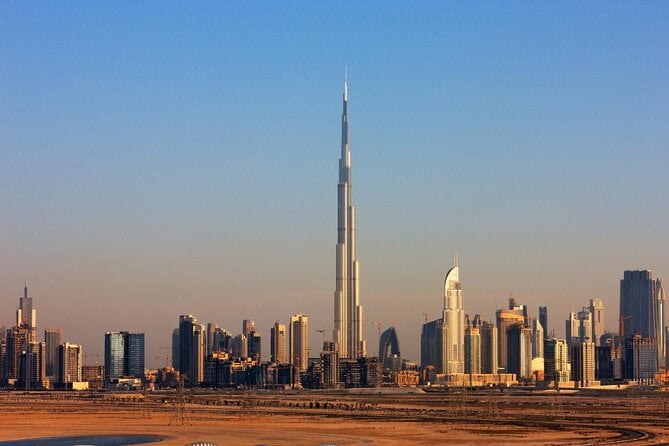
Burj Khalifa
The Burj Khalifa is the tallest building in the world, soaring 2,717 feet (828 meters) high with more than 160 stepped floors that narrow as it climbs syringe-like to the sky. Designed to pay homage to the complex geometry of Islamic art, the Burj Khalifa brings a new meaning to the term skyscraper and is a highlight of the massive downtown Dubai complex.
Book

Palm Jumeirah
Jutting into the Persian Gulf from southern Dubai, the Palm Jumeirah is an artificial island in the shape of a palm tree and ringed by a crescent-shaped breakwater. The world’s biggest artificial island, it draws visitors to its palatial hotels, theme parks, and shopping malls.
Book

Mall of the Emirates
Smack dab in the heart of modern Dubai, the Mall of the Emirates is more than the city’s second-largest mall. The multilevel center, one of Dubai’s most popular destinations, draws visitors with a huge array of international stores and leisure attractions, from fashion outlets and restaurants to theaters and an indoor ski resort.
Book
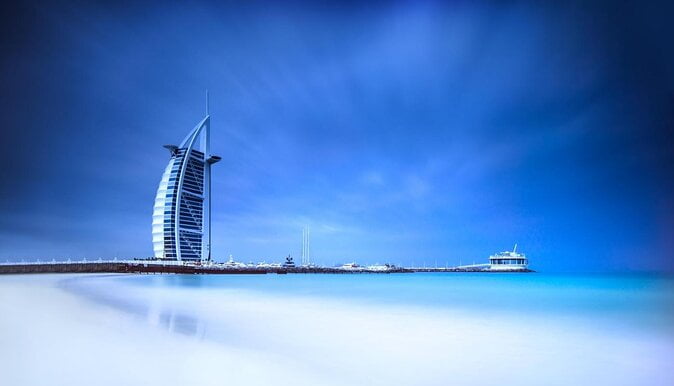
Burj Al-Arab Jumeirah
The sail-like silhouette of the Burj Al-Arab Jumeirah has become a symbol of Dubai's opulence and affluence, standing at 1,053 feet (321 meters) as the third-tallest hotel and one of the most luxurious hotels in the United Arab Emirates. Opened in 1999, the landmark boasts plenty of superlatives, including its five-star status.
Book

Dubai Miracle Garden
A floral wonderland of 50 million flowers, the Dubai Miracle Garden is one of the UAE's most original attractions. Branded as the world's largest natural flower garden, it boasts hundreds of flower-formed displays spread over 18 acres (7.3 hectares), all of which create an extravaganza of color and scent on the outskirts of Dubai.
Book

The Dubai Mall
The world’s largest shopping mall by area, The Dubai Mall boasts a huge range of attractions—making it a full-blown UAE entertainment destination. At the heart of Downtown Dubai, this 4-level colossus houses around 1,300 stores, plus restaurants, cinemas, Dubai Aquarium & Underwater Zoo, and the Burj Khalifa.
Book

Sheikh Zayed Grand Mosque
The massive, white Sheikh Zayed Grand Mosque is the central place of worship for citizens of the United Arab Emirates, accommodating roughly 40,000 people. Highlights inside include white marble columns with mother-of-pearl engravings, expansive Iranian carpets, and intricate crystal chandeliers.
Book

Dubai Marina
Carved along the Gulf shoreline south of Dubai’s The Palm island, Dubai Marina is a skyscraper-packed waterfront community that’s one of the city’s swishest residential and leisure hotspots. At its heart is a 2-mile (3-kilometer) waterway framed by residential blocks, hotels, shops, restaurants, and entertainment venues.
Book

Ferrari World Abu Dhabi
The race car–themed Ferrari World in Abu Dhabi features 20 rides and attractions—everything from the toddler-friendly carousel of Ferrari prototype cars to cutting-edge racing simulators that will please older kids and teens. The largest indoor theme park in the world is also home to the world’s fastest roller coaster, the Formula Rossa, a hydraulic-powered thrill ride that sees visitors strapped into a Ferrari Formula One-like coaster car and launched at speeds of up to 150 miles (240 kilometers) per hour.
Book

Global Village
Global Village is one of Dubai’s most popular evening entertainment destinations. A combination of festival and theme park staged on the edges of Dubai, it opens yearly between November and April and takes visitors on a virtual world tour with replica international architecture, cultural zones, food pavilions, shows, rides, and markets.
Book
